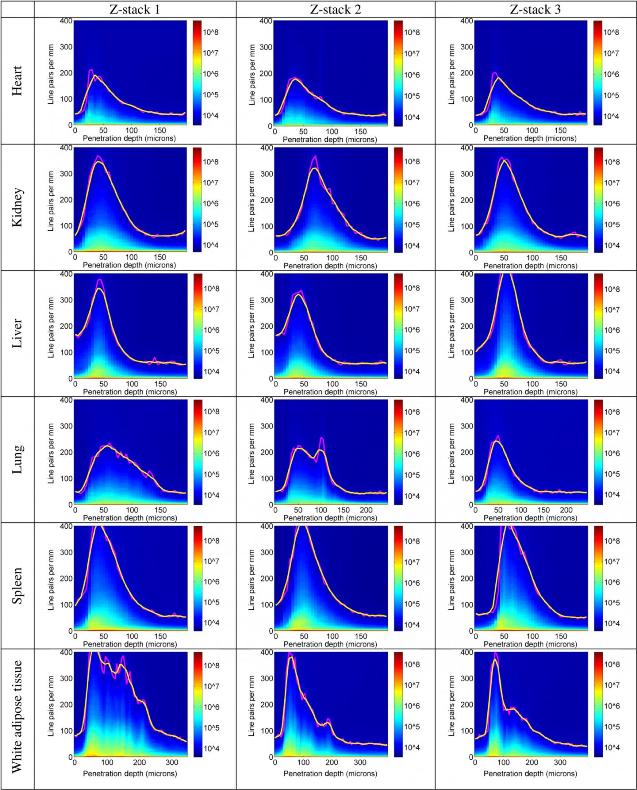Jun 15 2015
The ability to fight life-threatening diseases has been significantly enhanced by light-based biomedical optics and biophotonics technologies. A special section in the current volume of the Journal of Biomedical Optics, published by SPIE, the international society for optics and photonics, is devoted to reports on advances in these fields, and celebrates the United Nations-declared International Year of Light 2015.
 Researchers at Massachusetts Institute of Technology compare microscopy methods, in one of the papers in a special section. Credit: Christopher J. Rowlands, Oliver T. Bruns, Moungi G. Bawendi, Peter T. C. So; J. Biomed. Opt. 20(6), 061107 (Apr 06, 2015). doi:10.1117/1.JBO.20.6.061107
Researchers at Massachusetts Institute of Technology compare microscopy methods, in one of the papers in a special section. Credit: Christopher J. Rowlands, Oliver T. Bruns, Moungi G. Bawendi, Peter T. C. So; J. Biomed. Opt. 20(6), 061107 (Apr 06, 2015). doi:10.1117/1.JBO.20.6.061107
The special section parallels a dedicated session at the European Conference on Biomedical Optics (ECBO) running 21-25 June in Munich. SPIE is a sponsor of ECBO.
Papers in the special section highlight the rapidly growing interdisciplinary field of biomedical research that has produced new methods for noninvasive disease screening, diagnosis, and treatment monitoring.
Guest editors are SPIE Fellows including SPIE Past President Katarina Svanberg (Lund University Hospital), Rainer Leitgeb (Medical University of Vienna), Nirmala Ramanujam (Duke University), and Jürgen Popp (Leibniz Institute of Photonic Technology Jena and Friedrich-Schiller University Jena) and SPIE Senior Member Peter Andersen (Technical University of Denmark).
"Light technologies revolutionized the medical field by improving both diagnostics and treatment," the guest editors say in their editorial. "Our armory to fight life-threatening diseases has been significantly enhanced by light-based technologies, either by improved diagnostics, or by providing efficient image guidance during surgery, or for treatment itself. Modern light technologies play a vital role in our daily lives. We live in exciting times."
The editors note that the Nobel Prize in Chemistry was awarded in 2014 for "opening the door to optical in-vivo nanometer imaging," important for studying live red blood and other cells, monitoring the interactions of molecules within cells, and tracking bacteria and disease-related proteins.
Among the papers in the special section is an open-access article by Christopher Rowlands et al. at Massachusetts Institute of Technology on multiphoton microscopy (MPM) research. MPM allows for deep tissue imaging with molecular contrast and high resolution and is the key imaging technique for studying the brain in vivo.
In "Objective, comparative assessment of the penetration depth of temporal- focusing microscopy for imaging various organs," the authors discuss the penetration depth of both techniques for different types of tissue and introduce an original method for quantitative assessment of the image quality over tissue depth.
Their results indicate that spot-scanning MPM outperforms temporal focusing but is still slower in acquisition time.
In "Intraoperative imaging during Mohs surgery with reflectance confocal microscopy: initial clinical experience," Eileen Flores and colleagues at Memorial Sloan Kettering Cancer Center report on a new model for the micrographic surgery that has become standard procedure for treating non-melanoma skin cancer, a disease that is dramatically increasing worldwide.
Their open-access paper provides evidence that combining Mohs surgery with intraoperative optical imaging to outline tumor margins helps significantly ease the currently tedious and inefficient procedure of removing the malignant tissue.
Anna Mascaro and colleagues at the University of Florence review various neurophotonics techniques in "Towards a comprehensive understanding of brain machinery by correlative microscopy." The researchers discuss hybrid techniques that correlate information from different imaging technologies such as magnetic resonance to light and electron microscopy to help bridge the gap between temporal and spatial scales of brain function.
The publication coincides with a "hot topics" session on 21 June during ECBO. Moderated by Professor Svanberg, the session will feature short talks on emerging developments in biophotonics for the life sciences. Speakers are:
- Brett Bouma, Wellman Center for Photomedicine, Harvard University
- Quincy Brown, Tulane University
- Hamid Deghani, University of Birmingham
- Vasilis Ntziachristos, Helmholtz Zentrum München GmbH
- Francesco Pavone, European Lab for Non-linear Spectroscopy
- Peter So, Massachusetts Institute of Technology
- Ronald Sroka, Laser-Forschungslabor
- Alex Vitkin, Ontario Cancer Institute.
Also during ECBO, 2014 Chemistry Nobel Laureates Stefan Hell (Max Planck Institute Göttingen ) and Eric Betzig (Janelia Research Campus, Howard Hughes Medical Institute) will discuss in plenary talks how their breakthroughs allowed scientists to visualize the pathways of individual molecules inside living cells.
Federico Capasso, Harvard University; Ernst Stelzer, Johann Wolfgang Goethe Univ. Frankfurt am Main; and Sune Svanberg, Lund University and South China Normal University, will also give plenary talks.